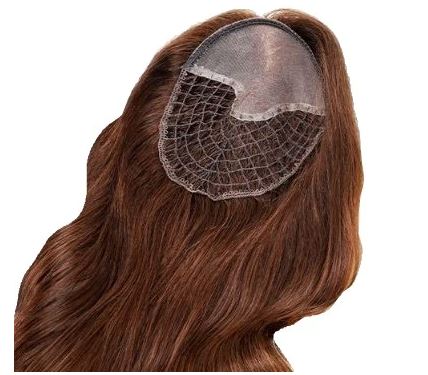Want to work in the wig industry, but don’t know where to start?
Choosing the best wig service field to enter can be a daunting task. We have compiled a list of wig services that you may be able to provide your clients. Select the one that’s right for you based on your skill level and expertise.
Wig Cleaning & Conditioning:
Wig cleaning and conditioning services are designed to refresh and maintain the quality of wigs. These services typically involve a thorough cleaning process to remove dirt, oils, styling product and lace glue residue. Specialized wig shampoos and conditioners are used to cleanse and hydrate the wig, ensuring it remains soft and manageable. Additionally, conditioning treatments help to restore luster and prevent tangling or matting. Professional wig cleaning and conditioning services can extend the lifespan of wigs and keep them looking their best, ensuring that wearers can enjoy beautiful and well-maintained hairstyles.
Wig Coloring:
Wig coloring services involve applying color to wigs to achieve a desired look or match a person’s hair color. Professionals use various techniques, such as dyeing, highlighting, and lowlighting, to create different effects. Customers can choose from a wide range of colors, including natural shades, vibrant hues, and trendy tones. Wig coloring services provide a convenient way to customize wigs to suit individual preferences, allowing for personal expression and style versatility. It’s important to consult with a skilled stylist who can assess the wig’s material and recommend suitable products and techniques to ensure a successful and long-lasting color transformation.
The ability to dye or color wigs to match specific shades or create unique color combinations is highly valuable. This skill involves understanding color theory, blending techniques, and using appropriate hair dyes or pigments.
Wig Restyling and Customization:
Wig restyling and customization services involve transforming existing wigs to suit individual preferences and needs. These services typically include altering the wig’s style, length, color, and texture to create a personalized look. Professional wig stylists use various techniques such as cutting, trimming, coloring, and heat styling to achieve the desired outcome. Customization options can range from subtle changes to dramatic transformations, allowing individuals to express their unique style and enhance their confidence. Whether it’s reviving an old wig or creating a completely new look, wig restyling and customization services offer a tailored solution for those seeking a fresh and personalized appearance.
Proficiency in using heat styling tools such as curling irons, flat irons, and hot rollers is important for creating various hairstyles, waves, or curls. Knowing how to safely apply heat without damaging the wig is essential.
Being able to cut and shape wigs according to desired styles is also a crucial skill. This includes creating layers, bangs, or specific haircuts to achieve the desired look.
Wig Ventilation:
Wig ventilation is a specialized technique used to create realistic and natural-looking wigs. Ventilation refers to the process of hand-tying individual strands of hair onto a wig cap, mimicking the way hair grows from the scalp. Skilled wig technicians carefully knot each hair strand to the cap, ensuring a secure and seamless attachment. This skill is essential for creating custom wigs with a natural-looking hairline and parting. It requires patience, precision, and attention to detail.
Hair ventilation techniques are essential for achieving a realistic appearance, as they determine how the hair lays and moves on the wig. This service is particularly crucial for custom-made wigs, as they ensure the hair looks as natural as possible and matches the client’s desired style. With the expertise of professional wig technicians, hair ventilation services can transform a wig into a lifelike and beautiful hairpiece.
We offer a variety of classes on how to make wigs.
View our hair ventilation supplies.
Wig Cap Repair:
Wig repair services are designed to restore and fix damaged wigs, ensuring they can be worn again. Whether the wig has experienced wear and tear, frayed edges, loose or missing strands, or other issues, professional wig repair technicians can assess the damage and implement necessary repairs.
Common wig repair services include reattaching loose or detached wig caps, resewing wefts that have come undone, replacing damaged or missing hair strands, fixing torn lace fronts, re-fronting the hairline and repairing any structural damage.
Wig repair technicians have the expertise to handle various types of wigs, including synthetic and human hair wigs. They use specialized tools and techniques to carefully mend the wig, ensuring that the repairs are discreet and blend seamlessly with the original wig.
By opting for a wig repair service, individuals can extend the lifespan of their wigs and save money compared to purchasing a new one. These services allow wig wearers to enjoy their favorite wigs for longer, maintaining their appearance and quality.

Wig Modification:
Is there anything worse than wearing a wig that is too large? What if the wig you tried on was too small? It is crucial to be able to customize wigs to fit different head sizes and shapes. Wig modification services include adjusting the wig cap size, adding adjustable straps or combs, or reshaping the wig for a more secure and comfortable fit.
Watch the wig modification video.

Wig Integration (Wigs and Toppers):
Understanding how to seamlessly integrate a wig with natural hair or existing hairpieces is a useful skill. This involves ensuring a smooth transition between the wig and the individual’s own hair, creating a natural appearance. Consider learning how to make hairpieces and toppers that integrate hair. Demonstration units should be available as well.
Online Course: Hair Integration Systems

Creative Styling:
Having a creative mindset and being able to think outside the box when it comes to wig styling can set you apart. Experimenting with unique techniques, incorporating accessories, or creating unconventional styles can make your work stand out. There would be a great deal of demand for this skill in the television and theatre industries.
Wigs for Kids:
If you are interested in making wigs for kids, you can also consider volunteering with organizations such as Wigs for Kids. They provide hairpieces to children aged 18 years or younger who are experiencing hair loss due to medical reasons. They have a recipient program that provides detailed instructions and guidance for performing each step in the eight stages of the program. This is a great way to showcase your skills and help children become more confident with their appearance.
Wigs for Cancer Patients (Medical Wigs / Cranial Prosthesis):
Special considerations must be made when constructing medical wigs. Medical wigs are primarily intended for cancer patients or those experiencing hair loss as a result of a medical condition. Wigs designed for medical use are known for their minimal irritation of the scalp. Patients desire a wig that is soft and comfortable while fitting securely to their head. Adding anti-slip silicone aids in keeping the wig fixed on the head.
Remember that glue or tapes should NOT be used for medical wigs because they can irritate the scalp.
Wig consultants should also know how to bill for cranial prosthesis so that their clients can possibly be reimbursed for their wig costs.
The best way to develop these wig-related skills is through practice, training, and continuous learning. By mastering techniques in these fields, you will be able to offer customized wig solutions to your clients.








Insightful post on wig services! 👩🔧💡 Identifying those application fields is a game-changer. Really helpful for wig enthusiasts like me! 🌟
LikeLike